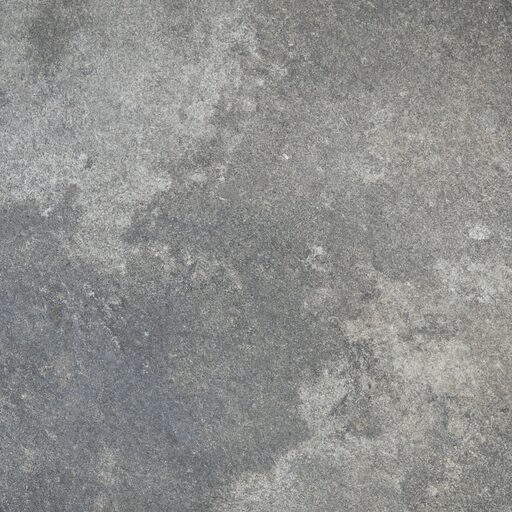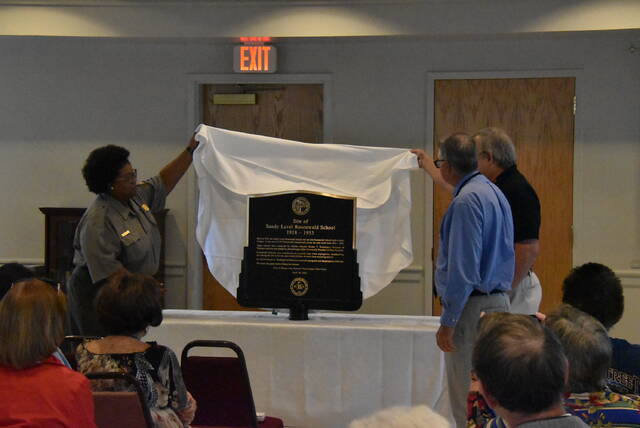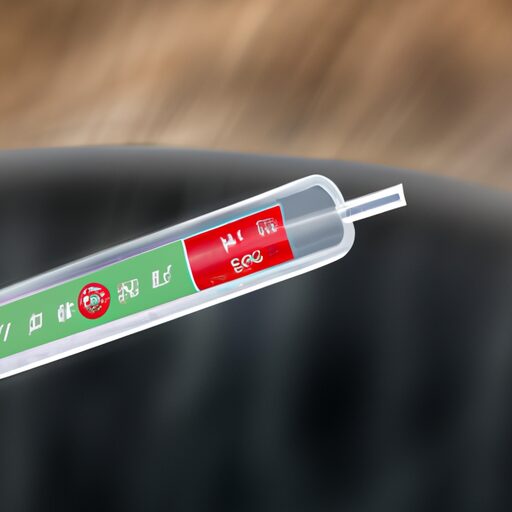Clean Hydraulic Fluid Off Concrete
Hydraulic fluid spills on concrete surfaces can be a common occurrence in industrial settings, and the removal process can often be challenging. This article aims to provide a comprehensive guide on how to effectively clean hydraulic fluid off concrete. Despite the potential difficulties involved, it is important to address this issue promptly as hydraulic fluid stains can lead to unsightly and potentially hazardous conditions. By following the recommended procedures outlined in this article, individuals will gain valuable knowledge on assessing the stain, acquiring suitable supplies, absorbing excess fluid, applying a degreaser, scrubbing the stain, rinsing the area thoroughly, and implementing preventive measures for future incidents. While some may argue that cleaning hydraulic fluid spills off concrete requires professional assistance due to its chemical composition and specific cleaning techniques required, this article seeks to empower readers with step-by-step instructions that enable successful removal of hydraulic fluid stains from concrete surfaces without professional intervention.
Assess the Stain and Gather Supplies
The first step in the cleaning process involves carefully evaluating the extent of the hydraulic fluid stain on the concrete surface and preparing all necessary supplies for effective removal. Assessing stain severity is crucial to determine the appropriate cleaning method. Inspecting the stain allows one to identify its size, depth, and how long it has been present. This evaluation helps in selecting appropriate cleaning supplies tailored to the specific needs of the stain.
To assess stain severity, begin by examining the size of the stained area. If it covers a large portion of the concrete or extends deeply into its pores, it may require more intensive cleaning methods. Additionally, note any discoloration or residue left behind by previous attempts at removal.
After assessing stain severity, gather all necessary supplies for successful cleanup. These typically include absorbent materials like kitty litter or sawdust to soak up excess fluid, as well as a degreasing agent specifically designed for removing hydraulic fluid stains from concrete surfaces. It is important to ensure that these cleaning supplies are readily available before starting.
Once you have assessed the stain severity and gathered your supplies, you can proceed with absorbing excess fluid from the concrete surface without delay.
Absorb Excess Fluid
To absorb the excess fluid, one can use cat litter or sawdust. These materials are effective at soaking up hydraulic fluid and can be easily obtained. After applying the absorbent material to the spill, it is important to let it sit for a period of time to allow it to fully absorb the fluid. Once the absorption process is complete, simply sweep up the soaked material and dispose of it properly.
Use cat litter or sawdust to absorb the fluid
Using either cat litter or sawdust to absorb hydraulic fluid from concrete is an effective and practical method for containment and cleanup. This cleaning method offers environmentally friendly options that effectively remove the fluid without causing harm to the surrounding environment. To successfully clean hydraulic fluid off concrete using cat litter or sawdust, follow these steps:
- Sprinkle a generous amount of cat litter or sawdust directly onto the spill, covering the affected area completely.
- Gently press down on the absorbent material to ensure maximum contact with the fluid.
- Allow the cat litter or sawdust to sit undisturbed for approximately 30 minutes to allow sufficient time for absorption.
- Once the allotted time has passed, use a broom or a stiff brush to sweep up the now absorbed hydraulic fluid along with the cat litter or sawdust.
This method provides an efficient way of containing and removing hydraulic fluid from concrete surfaces, ensuring a clean and safe environment. Transitioning into the subsequent section about ‘let it sit and sweep it up,’ this technique allows for easy removal of absorbed fluids without further complications.
Let it sit and sweep it up
Allowing the absorbent material to settle undisturbed on the spill for approximately 30 minutes enables effective absorption and facilitates easy removal. This technique is a crucial step in cleaning hydraulic fluid off concrete surfaces. To provide a comprehensive understanding of this process, a table can be implemented to showcase various absorbent materials commonly used in this task. The table below presents three options: cat litter, sawdust, and clay-based absorbents. Cat litter is highly absorbent and readily available, making it an eco-friendly choice. Sawdust is another alternative that effectively absorbs hydraulic fluid while also providing traction on slippery surfaces. Clay-based absorbents are known for their exceptional oil-absorbing capabilities and are often preferred by professionals due to their high efficiency. After the hydraulic fluid has been absorbed using these techniques, the next step involves applying a degreaser to completely eliminate any remaining residue.
| Absorbent Material | Absorption Capacity | Eco-Friendly |
|---|---|---|
| Cat Litter | High | Yes |
| Sawdust | Moderate | Yes |
| Clay-Based | Very High | No |
This prepares the surface for further cleaning by removing any lingering traces of hydraulic fluid before proceeding with additional steps.
Apply a Degreaser
One effective method of removing hydraulic fluid from concrete involves the application of a potent degreaser. Choosing the right degreaser is crucial in ensuring successful removal of the fluid stain. When selecting a degreaser, it is important to consider its effectiveness in breaking down oil and grease, as well as its compatibility with concrete surfaces. Look for products specifically designed for removing hydraulic fluid or oil stains from concrete.
There are alternative methods for cleaning hydraulic fluid off concrete, such as using absorbent materials like cat litter or sawdust to soak up the excess fluid before applying a degreaser. However, these methods may not be as effective in completely removing the stain and may require additional steps.
To apply the chosen degreaser, start by following the manufacturer’s instructions carefully. Typically, you will need to dilute the concentrated solution with water before application. Apply the diluted mixture onto the stained area and allow it to sit for a recommended amount of time to allow the degreaser to penetrate and break down the hydraulic fluid.
Once sufficient time has passed, proceed to scrubbing the stain using a stiff brush or broom. This will help loosen any remaining residue and aid in lifting it off the surface of the concrete.
Transitioning into scrubbing can effectively remove any remaining traces of hydraulic fluid from your concrete surface without causing further damage.
Scrub the Stain
When it comes to scrubbing the stain, it is important to use a stiff-bristled brush for effective cleaning. The stained area should be scrubbed in a circular motion to ensure thorough removal of the hydraulic fluid residue. If necessary, additional degreaser can be applied to aid in the cleaning process.
Use a stiff-bristled brush
Using a stiff-bristled brush, the concrete can be vigorously scrubbed in order to effectively remove any traces of hydraulic fluid. This method is particularly effective when combined with the use of the right cleaning products specifically designed for removing stubborn stains from concrete surfaces. The stiff bristles of the brush help to agitate and lift the stain, allowing it to be easily washed away. When scrubbing, it is important to apply firm pressure and work in a back-and-forth motion, ensuring that all areas of the stain are thoroughly addressed. By using this technique, the hydraulic fluid can be successfully eliminated from the concrete surface, restoring its cleanliness and appearance.
| 1 | 2 | 3 | 4 | 5 | |
|---|---|---|---|---|---|
| A | Stiff Bristle Brush | Vigorous Scrubbing | Hydraulic Fluid Removal | Effective Method | Concrete Surface Restoration |
| B | Agitation | Firm Pressure | Back-and-Forth Motion | Cleaning Products | Cleanliness |
Transitioning into the subsequent section about "scrubbing the stained area in a circular motion", this technique provides an alternative approach for removing stubborn stains from concrete surfaces without causing damage or leaving residue behind.
Scrub the stained area in a circular motion
To effectively clean hydraulic fluid stains off concrete, it is recommended to use a stiff-bristled brush. This method helps loosen and remove the stubborn stains from the surface. Once you have applied the degreaser, it is important to scrub the stained area in a circular motion. This technique ensures that all parts of the stain are thoroughly cleaned and removed from the concrete surface. By following this cleaning technique, you can achieve effective stain removal and restore the appearance of your concrete. To enhance your understanding of this process, here are three key points to consider:
- The use of a stiff-bristled brush helps to agitate and lift the hydraulic fluid stains.
- Scrubbing in a circular motion ensures comprehensive coverage and thorough cleaning.
- This cleaning technique is an effective method for removing stubborn stains from concrete surfaces.
By incorporating these techniques into your cleaning routine, you can achieve optimal results in removing hydraulic fluid stains from concrete surfaces. Next, we will discuss how to apply more degreaser if needed without compromising on efficiency or effectiveness.
Apply more degreaser if needed
Additionally, if further degreasing is necessary, additional application of the degreaser can be applied to ensure thorough removal of any remaining stains from the concrete surface. This step is crucial in achieving optimal results and restoring the cleanliness of the affected area. Before applying more degreaser, it is important to assess the effectiveness of previous cleaning efforts and determine if alternative cleaning methods should be considered. However, if stubborn hydraulic fluid stains persist, applying more degreaser can help break down and remove any leftover residue. It is advisable to carefully follow the manufacturer’s instructions when using degreasers to avoid any adverse effects on the concrete surface. Once this step has been completed, the subsequent section will cover how to rinse the area for a final touch in restoring its pristine condition.
Rinse the Area
Rinsing the area thoroughly ensures that any residue of hydraulic fluid is effectively removed, leaving behind a clean and pristine concrete surface. To achieve this, several steps can be followed:
-
Pressure washing: The use of a pressure washer can help to dislodge and remove the hydraulic fluid from the concrete surface. The high-pressure water stream helps to break down and wash away any remaining traces of the fluid.
-
Use of cleaning chemicals: In some cases, simply rinsing with water may not be sufficient to remove all the residue. In such situations, it may be necessary to use specific cleaning chemicals designed for removing oil-based stains. These chemicals can help to break down the hydraulic fluid and make it easier to rinse off.
-
Thorough rinsing: After applying pressure washing or cleaning chemicals, it is crucial to rinse the area thoroughly with clean water. This step ensures that all traces of both the hydraulic fluid and any cleaning agents are completely removed from the concrete surface.
By following these steps, one can effectively eliminate any remnants of hydraulic fluid on concrete surfaces. If there are still signs of contamination after rinsing, it may be necessary to repeat the process until satisfactory results are achieved in order to restore the cleanliness and integrity of the concrete surface without leaving behind any oily residues or stains.
Repeat if Necessary
After rinsing the area to clean hydraulic fluid off concrete, it is important to check the stain to determine if further action is needed. If the stain persists after rinsing, it may be necessary to repeat the previous steps of cleaning and rinsing. By carefully evaluating the results and taking appropriate measures, one can ensure thorough removal of hydraulic fluid stains from concrete surfaces.
Check the stain after rinsing
Evaluating the efficacy of the cleaning process is essential to determine whether the stain has been successfully eliminated from the concrete surface. This assessment allows for an informed decision on whether to proceed with further treatment or consider alternative methods. To facilitate this evaluation, a table can be used to compare the initial stain intensity with its current state after rinsing. The table should have two columns: one for the stain’s characteristics (e.g., size, color, texture) before and after rinsing, and another column for notes or observations. By visually comparing these two sets of data, any changes in the stain’s appearance can be easily identified and assessed. If the stain persists even after rinsing, it may indicate that additional cleaning steps are required. Transitioning into the subsequent section about repeating previous steps would allow for a systematic approach in achieving a thoroughly clean concrete surface.
If the stain persists, repeat the previous steps
After rinsing the stained area, it is important to check if the stain persists. If the hydraulic fluid stain remains visible on the concrete surface, it is necessary to repeat the previous cleaning steps. However, instead of using the same cleaning method, it may be beneficial to try different approaches in order to effectively remove the stubborn stain. This could include utilizing alternative cleaning products or employing various techniques such as scrubbing with a brush or using a pressure washer. If all attempts fail and the stain still persists, it may be advisable to seek professional help from experts who specialize in concrete stain removal. They possess advanced knowledge and equipment that can ensure effective and efficient removal of persistent stains. Transitioning into preventing future stains, implementing preventive measures can help avoid similar incidents in the future.
Prevent Future Stains
To mitigate the likelihood of future stains, implementing regular inspections and maintenance routines can be considered. These preventive measures play a crucial role in ensuring long-term solutions for minimizing the occurrence of hydraulic fluid stains on concrete surfaces. Regular inspections involve visually examining the concrete areas where hydraulic fluid may come into contact, such as parking lots or loading docks, to identify any signs of leakage or spillage. This proactive approach allows for early detection and prompt action to prevent further damage.
In addition to inspections, establishing a comprehensive maintenance routine is essential. This includes maintaining hydraulic systems regularly to minimize the risk of leaks or spills. Proper maintenance ensures that hydraulic equipment operates efficiently and reduces the chance of fluid seepage onto concrete surfaces. It involves inspecting seals, fittings, hoses, and connectors for any signs of wear or deterioration.
Furthermore, implementing preventive measures such as installing containment systems can provide an added layer of protection against potential spills. Containment systems are designed to contain and control any leaks or spills that may occur during hydraulic system operations.
By incorporating these preventive measures into regular inspections and maintenance routines, individuals can significantly reduce the likelihood of future hydraulic fluid stains on concrete surfaces. Adopting a proactive approach not only prevents staining but also promotes the long-term durability and aesthetic appeal of concrete structures in various settings.
Frequently Asked Questions
Can I use regular soap and water to clean hydraulic fluid stains off concrete?
Using a pressure washer or applying baking soda can effectively remove hydraulic fluid stains from concrete. These methods are recommended for their ability to break down the oil and lift it off the surface.
Is it necessary to use a degreaser to clean hydraulic fluid stains off concrete?
Degreasers are commonly used to remove hydraulic fluid stains from concrete, but alternative methods exist. However, it is important to consider the environmental impact of using degreasers as they can introduce harmful chemicals into the ecosystem.
What type of brush or scrubber should I use to scrub the stain?
To effectively scrub stains off concrete, it is recommended to use a stiff-bristle nylon brush or a wire brush. These brush types provide the necessary abrasiveness to remove the stain without causing damage to the concrete surface.
Should I rinse the area with hot or cold water after scrubbing the stain?
The effectiveness of different cleaning solutions can be influenced by the temperature of the water used for rinsing. While both hot and cold water can be effective, hot water may enhance the removal of hydraulic fluid stains due to its ability to dissolve grease and oil more effectively.
How frequently should I repeat the cleaning process if the stain persists?
The frequency of repeating the cleaning process for persistent hydraulic fluid stains depends on factors such as how long the stains have set in, which affects the cleaning process. Other effective methods for removing these stains from concrete include using absorbent materials and specialized cleaners.
Conclusion
In conclusion, the process of removing hydraulic fluid stains from concrete requires a systematic approach. First, assess the stain and gather the necessary supplies. Then, absorb any excess fluid using an absorbent material. Next, apply a suitable degreaser to break down the stain. Scrub the area vigorously to ensure thorough cleaning. Rinse the area with water and repeat these steps if needed. Lastly, take preventive measures to avoid future stains. By following these steps diligently, you will restore the cleanliness of your concrete surface effectively.







